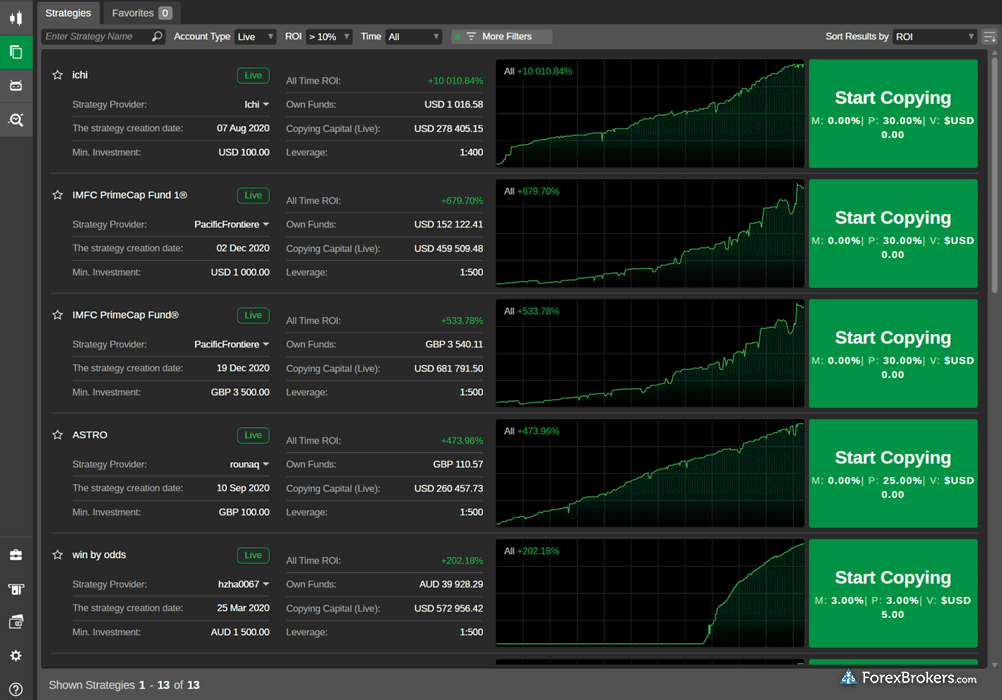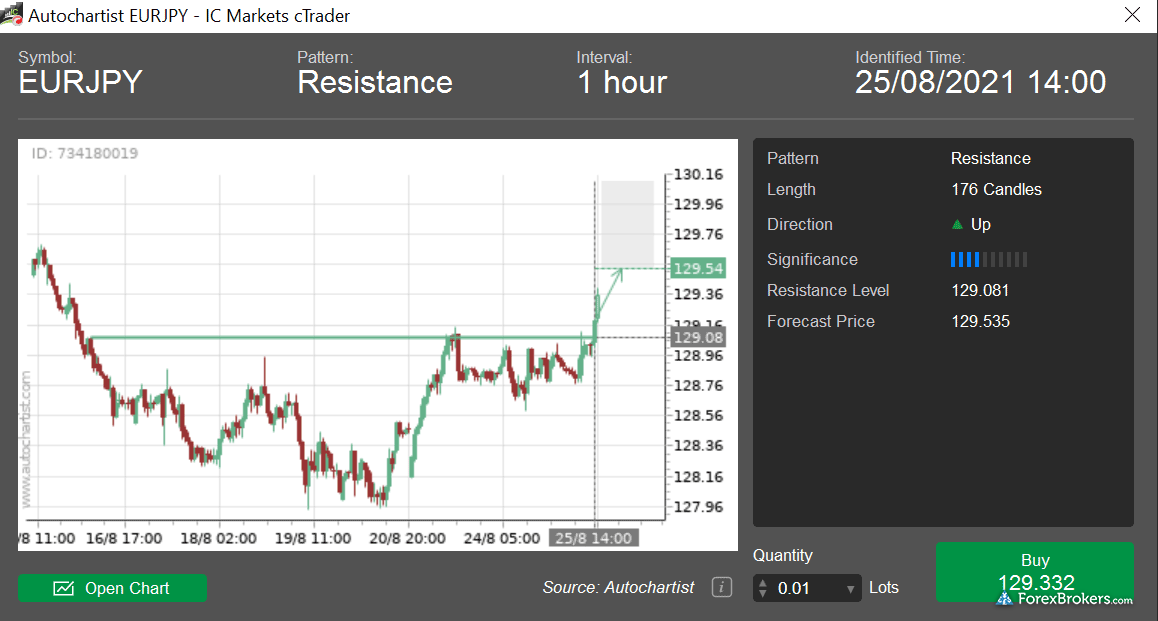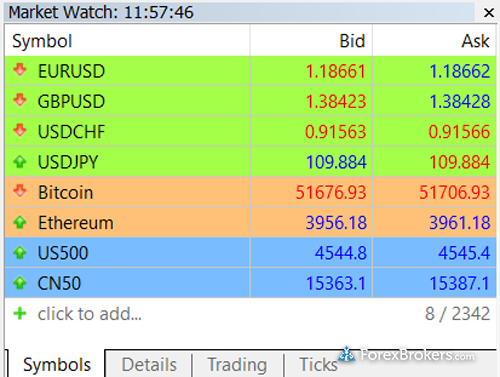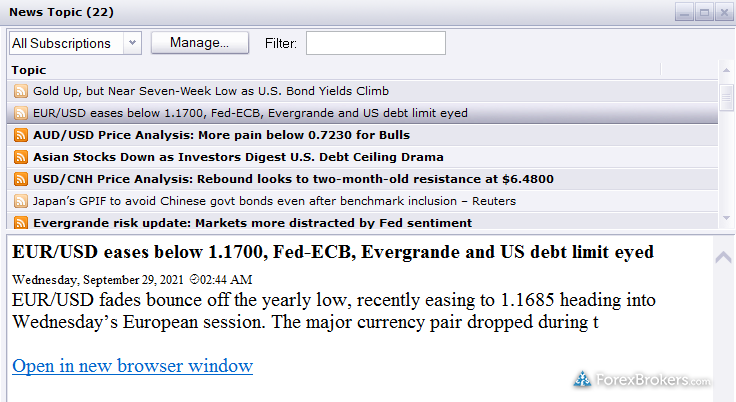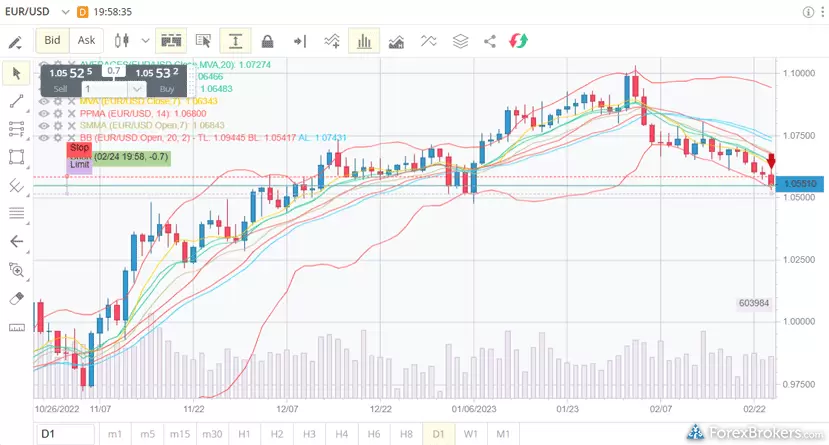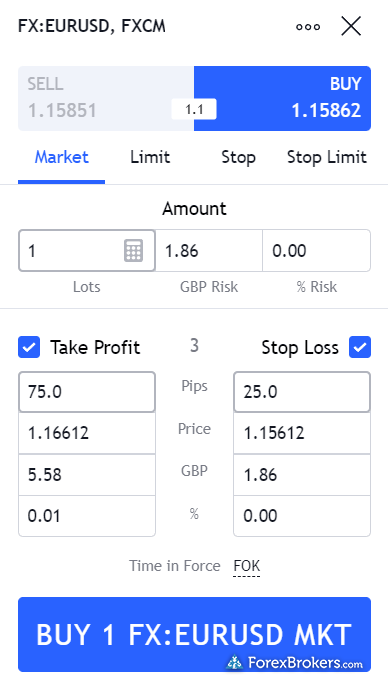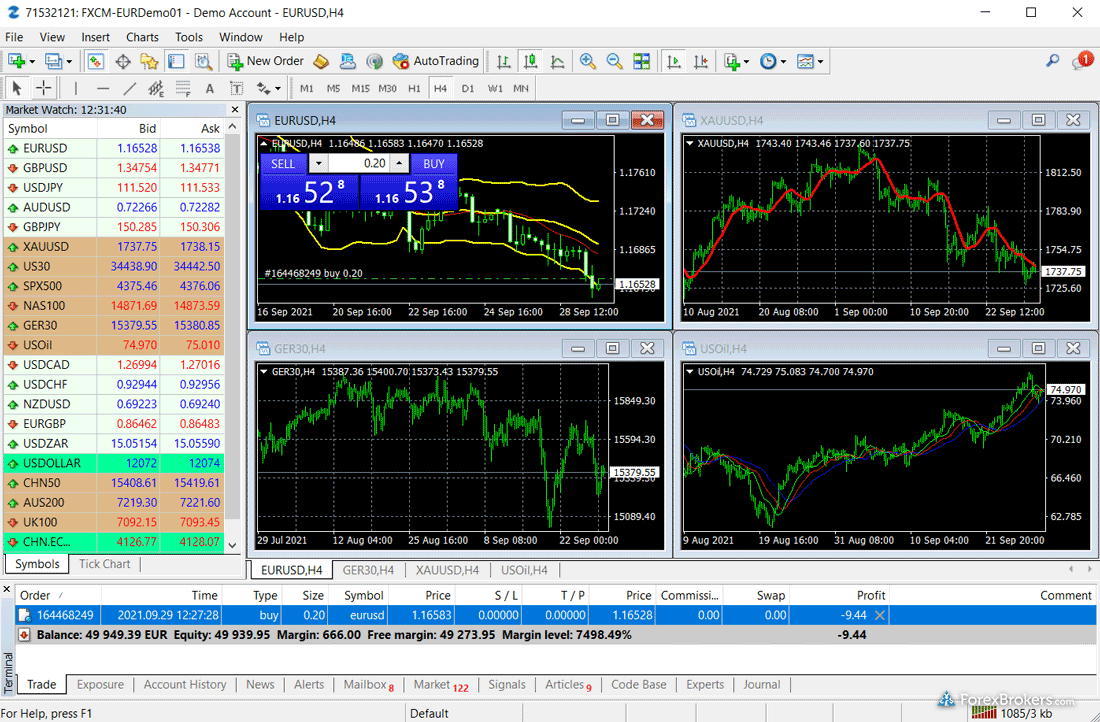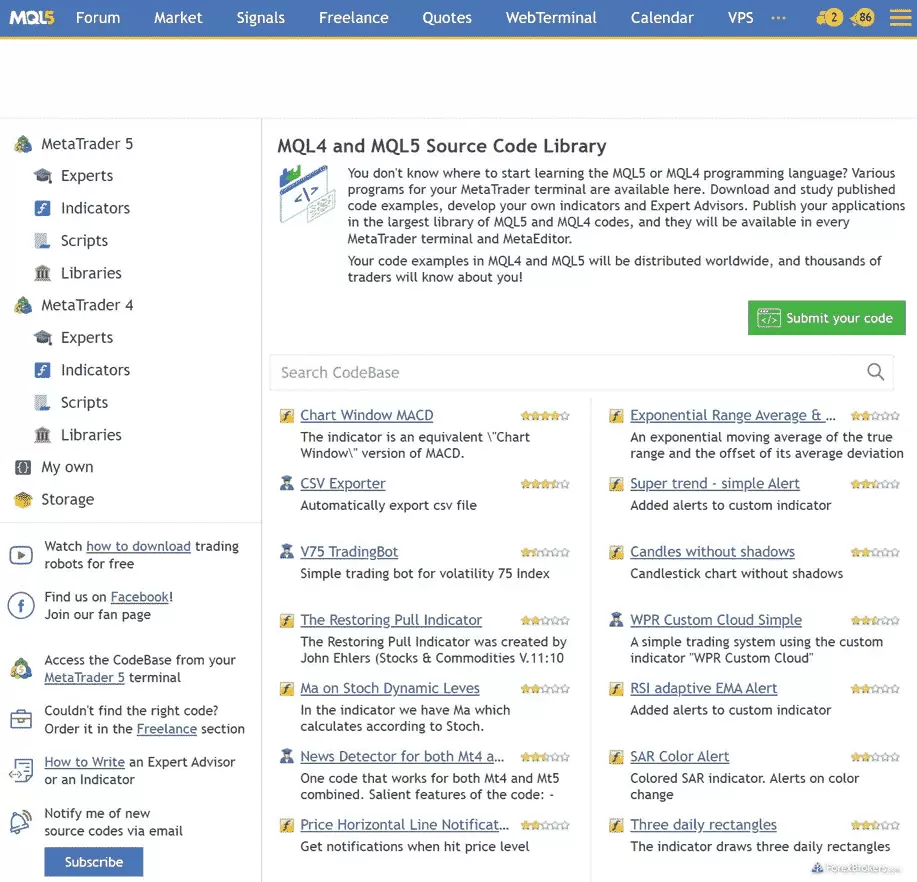Best platforms for high-frequency trading
Best forex broker for HFT strategies - IC Markets
| Company |
MetaTrader 4 (MT4) |
MetaTrader 5 (MT5) |
cTrader |
Execution: Market Maker |
All-in Cost EUR/USD - Active |
 IC Markets IC Markets
|
Yes |
Yes |
Yes |
Yes |
0.62 info |
My top pick for the best broker for HFT strategies, IC Markets’ scalable execution makes it a perfect fit for traders who want to run algorithmic strategies.
Pricing and order execution: IC Markets delivers competitive pricing and low average spreads available across its Raw Spread (available for MetaTrader) and cTrader account types, which help keep costs lower for high-frequency traders who need to make tens or hundreds of trades per day (or more).
Active traders: IC Markets also offers a three-tier active trader rebate program called Raw Trader Plus to help high-volume traders lower their trading costs depending on the monthly trading volume. The first tier of rebates kicks in if you trade over 100 closed lots per month (availability varies by region).
Research and tools: IC Markets provides an exhaustive list of available copy trading platforms and offers third-party research and trading signal tools which include Trading Central, Autochartist, and its Advance Trading toolkit with platform plugins. These factors helped IC Markets win our coveted 2025 Annual Award for #1 MetaTrader broker.
Platform selection: IC Markets supports a wide selection of high-frequency trading software: it can be used with both MetaTrader 4 and MT5 as well as the cTrader platform for running HFT algorithms. It also recently added the popular TradingView platform which supports algorithmic trading well. Learn more at my full review of IC Markets.
An attractive high-volume active trader program - Pepperstone
| Company |
MetaTrader 4 (MT4) |
MetaTrader 5 (MT5) |
cTrader |
Execution: Market Maker |
All-in Cost EUR/USD - Active |
 Pepperstone Pepperstone
|
Yes |
Yes |
Yes |
Yes |
0.70 info |
Pepperstone won Best in Class honors for our MetaTrader and Algo Trading categories in our 2025 Annual Awards - categories that are essential in a broker if you wish to implement an HFT trading strategy. The reason why Pepperstone is great for algorithmic trading has to do with a combination of factors, including its range of platforms that support trade automation, its available account types and execution methods, its active trader pricing, and its low average spreads.
Active trader pricing and trading costs: While the upfront cost of Pepperstone's Razor account is a bit steeper than my top pick, Pepperstone’s pricing is still competitive. In addition, high-volume traders can benefit from Pepperstone’s Active Trader program, which rebates a portion of the spread, depending on your monthly trading volume (up to $3 per FX lot and 30% reduced spreads at the highest tier). As algorithms can generate a large number of traders, depending on the amount of monthly volume your HFT system will generate, you can lower your effective monthly trading costs after accounting for this rebate.
Research tools: Pepperstone also ranks highly for its numerous offering of copy trading platforms, which can complement your algorithmic trading. Algo traders can use the platform to share their strategy for others to copy, diversify their own portfolio, or look for other trading opportunities. On that note, Pepperstone's research continues to improve, in terms of the quality and variety of in-house content alongside trading signals from third-party providers such as Autochartist.
Platform selection: Pepperstone provides access to both MetaTrader 4 and 5, the cTrader app, and TradingView, all of which can be used to implement HFT algorithms. Find out more about its offering by reading my in-depth review of Pepperstone.
Superb tools for advanced users - FXCM
| Company |
MetaTrader 4 (MT4) |
MetaTrader 5 (MT5) |
cTrader |
Execution: Market Maker |
All-in Cost EUR/USD - Active |
 FXCM FXCM
|
Yes |
No |
No |
Yes |
0.78 info |
FXCM rounds out my list of the top three best brokers for HFT trading due to how well it caters to advanced and professional traders with its wide support for third-party HFT and algo trading software.
Specialty platforms: In addition to offering MetaTrader, FXCM supports a wide array of specialty platforms, including QuantConnect, MotiveWave, AlgoTerminal, AgendaTrader, Sierra Chart, NeuroShell Trader, StrategyQuant, Capitalise.ai, and the Seer Trading Platform. In our 2025 Annual Awards, FXCM earned Best in Class honors for Platforms & Tools, Professional Trading, Copy Trading, and Algo Trading.
Technical support: Another unique feature that I like about FXCM is its support for algorithmic trading with an open-source repository on GitHub, which includes data on its REST API, Java API, and ForexConnect API. Moreover, there is a dedicated technical support team to assist traders in developing their MT4 Expert Advisors (EAs), making it a great choice to deploy automated trading strategies.
Trading costs: Pricing is generally average, but spreads at FXCM are more competitive for active traders or clients residing in the EU, U.K., or Australia. HFT traders may also appreciate the fact that FXCM publishes detailed monthly execution reports highlighting slippage statistics and trade execution quality across all order types - knowledge that can be instrumental in figuring out what your costs will be at the end of a trading day. Check out my review of FXCM to learn more about its platform.
Comparison of forex brokers good for high-frequency trading
FAQs
What is high-frequency trading?
High-frequency trading (HFT) refers to a type of algorithmic trading system that conducts a large number of trades throughout the trading day within extremely narrow time frames. A piece of algo trading software may execute hundreds of trades per day, while an HFT system can execute many thousands of trades in a matter of seconds. Usually employed by institutions or professional traders, HFT systems utilize complex mathematical algorithms that rapidly analyze market prices and news events in order to identify trading opportunities.
HFT systems also demand extraordinary computing power and require advanced high-frequency trading software. These high-powered trading programs can open and close trading positions in just microseconds. Reducing latency (the time elapsed between when an order is placed and when it is executed) is of such importance for HFT trading strategies that the servers that run these advanced trading systems typically need to be within close physical proximity of the broker’s data center or trading venue.
Is high-frequency forex trading legal?
Yes, high-frequency trading is legal. That being said, it’s possible that high-frequency trading strategies will not be permitted by your broker. Price-driven strategies (such as scalping) or latency-driven arbitrage strategies are prohibited altogether by some brokers. You should check with your broker directly to see if your HFT strategy will be allowed – and it’s always important to carefully examine your broker’s terms and conditions.
If your broker does permit HFT strategies or systems, it’s important to note the specific kinds of trading conditions that are available and to pay attention to your broker’s execution methods and trading costs. Even if your broker permits high-frequency trading, it may simply not be a feasible strategy if your broker makes it cost-prohibitive.
Though HFT systems are legal, they are also controversial. There are some well-known HFT practices that are simply illegal, such as spoofing and front-running.
Spoofing: Spoofing occurs when a high-frequency trading system rapidly places a large number of orders – and then cancels those orders before they can be executed. This strategy is done with the intent of creating an artificial sense of demand for a certain asset or instrument (or falsely driving demand downwards).
Front-running: Sometimes, HFT traders (or institutions) are able to identify significant impending orders for a certain asset or instrument within the market – before the orders are executed. This is (typically) done illegally, with insider (or, non-public) information. Then these traders or institutions are able to use the speed of HFT systems to quickly buy large amounts of that asset, which can be turned around and sold at a profit.
All that being said, over the last 20 years or so I have seen rules and regulations put in place to prevent practices like front-running, and to generally uphold market integrity and protect market participants. For example, some securities exchanges have implemented a universal speed bump that slows down all incoming orders in an attempt to level the playing field. Today, HFT strategies that are latency-driven or solely looking for price arbitrage are prohibited altogether by many forex market brokers and trading venues.
What are the pros & cons of high-frequency trading?
Pros
- Decisions are handled by computers. High-frequency trading is conducted by complex algorithms and high-powered computers, so these strategies won’t ever make decisions based on human emotion or psychology.
- HFT systems move fast. High-frequency trading systems are able to react rapidly to market movements and global news events that can impact markets.
Cons
- Computers aren’t perfect. HFT algorithms and systems may be complex, but they don’t make perfect decisions. In particular, they may not have the sophistication to determine whether a market-moving event is genuine, and they may not always react appropriately to volatility.
- HFT isn’t for everyone. An immense amount of technical skill is required to successfully develop and maintain an HFT strategy.
What are the best stock brokers for high-frequency trading?
Our research team has tested a wide range of stock brokers that offer algorithmic trading, API access, and cash equities. Thanks to its low trading costs and connectivity to over 100 trading venues across the globe, Interactive Brokers is our top pick for high-frequency trading. If you want to read more about Interactive Brokers’ stock trading offering, you can read the full-length review of Interactive Brokers on our sister site, StockBrokers.com.
Check out a gallery of screenshots from Interactive Brokers’ mobile stock trading app taken by the research team at our sister site, StockBrokers.com, during their product testing.
The following brokers are our top picks for using high-frequency trading strategies to trade stocks:
Can you do high-frequency trading on a mobile app?
Generally speaking, it isn't possible to run true high-frequency trading software from your mobile device. That being said, there are a number of third-party solutions that allow traders to run algo trading software on a variety of platforms and devices. For example, Capitalise.ai is a tool that allows you to build algorithmic HFT systems using natural (code-free) language. Trading with Capitalise.ai is not done on the typical scale of HFT, but it still offers a form of algorithmic trading that – for now – is as close as you'll get to running a full-fledged HFT strategy from your mobile device.
The following forex brokers offer Capitalize.ai for trading forex algorithmically:
smartphoneTrading on the go?
Check out my guide to the best mobile forex trading apps to learn more about mobile trading and to find my top picks for the best mobile trading apps.
Can you do high-frequency trading with forex?
Yes, there are many algorithmic trading programs that can be used by traders in the forex market to trade at a high frequency – sometimes thousands of orders per day. Though HFT software is typically found at institutional trading desks, it is becoming more common for retail forex traders to gain access to algorithmic trading programs – including those that could meet the definition of being an HFT.
To set up a high-frequency trading strategy for forex, you’ll need to determine what kind of strategy you will employ, and decide how orders will be triggered programmatically – regardless of whether you are using a trading API with your own software or a third-party trading platform such as MetaTrader.
Check out our full-length guide to the best brokers with Trading APIs, as well as our guide to the best MetaTrader brokers.
HFT strategies that are more price-sensitive will likely use limit orders, whereas execution-sensitive strategies may use market orders.
Note: Many brokers offer multiple execution methods across their account types and platforms.
Is high-frequency forex trading profitable?
Yes, high-frequency trading strategies can be profitable for forex traders. That being said, all trading strategies – including those that utilise HFT systems – involve risk. When considering any forex trading strategy, it’s important to remember that the vast majority of retail forex traders lose money. Finding success and making money with an HFT system will depend largely on which HFT system you’ve chosen, and on your HFT program’s configurations.
Choosing an HFT system: Thousands of individual HFT programs can be leased or purchased from third-party developers. One such source for third-party HFT systems is MetaTrader’s MQL5 community – you can learn more about MetaTrader and MQL5 by reading our popular MetaTrader 5 guide.
Check out a gallery of screenshots of the MQL Dashboard and Source Library, taken by our research team.
Note: Leasing or purchasing a third-party HFT system does not guarantee success or profitability, however, and any program’s overall effectiveness will still rely on the quality of its historical data and its actual live trading results, among other factors.
How do I get started with HFT trading?
HFT and algorithmic trading are nearly synonymous when it comes to retail trading. Most retail traders that dabble in HFT start out with commercially-available algorithmic trading systems that are compatible with popular trading platforms, such as MetaTrader, cTrader, and NinjaTrader.
If you decide to build your own HFT system, you’ll need to test your strategy by performing backtests on historical data. It’s important to use that data to get an idea of how your system would have performed before using it on a forward-testing basis.
Retail vs. Institutional: Retail trading systems for HFT might carry out tens or thousands of trades per day, whereas institutional HFT systems can execute thousands of trades per minute. These systems require advanced (and extremely expensive) equipment, as well as the ability to physically co-locate near the exchange or trading venue.
What is the best forex broker for high-frequency trading?
IC Markets is the best broker for traders who are looking to run high-frequency trading strategies for forex and CFDs, thanks to its robust order execution policy, low trading costs, and the option for FIX API connectivity to its cTrader platform. Our research team has conducted extensive testing on IC Markets’ entire product offering, check out our full-length review of IC Markets to read more about our findings.
Check out a gallery of screenshots from IC Markets’ desktop trading platform, taken by our research team during our product testing.
If you are looking to run your HFT systems at IC Markets, you have the option to either build it on MetaTrader 4 (MT4) or MetaTrader 5 (MT5) using the MQL syntax, or use the cTrader platform outright (or via API). “MQL” is MetaQuotes Software’s own programming language, designed to allow programmers to develop scripts, libraries, and technical indicators. You can learn more about MQL and MetaTrader by reading our full guide to MetaTrader 5 or by checking out my MT4 vs MT5 guide.
computerTrading APIs
There's a wide range of third-party applications that can be used to programmatically connect to FIX APIs for the purpose of trading using an HFT system, and open-source code can be found on Github. For more in-depth information about trading APIs, read our guide to the best brokers for trading APIs.
Our testing
Why you should trust us
Steven Hatzakis is a well-known finance writer, with 25+ years of experience in the foreign exchange and financial markets. He is the Global Director of Online Broker Research for Reink Media Group, leading research efforts for ForexBrokers.com since 2016. Steven is an expert writer and researcher who has published over 1,000 articles covering the foreign exchange markets and cryptocurrency industries. He has served as a registered commodity futures representative for domestic and internationally-regulated brokerages. Steven holds a Series III license in the US as a Commodity Trading Advisor (CTA).
All content on ForexBrokers.com is handwritten by a writer, fact-checked by a member of our research team, and edited and published by an editor. Our ratings, rankings, and opinions are entirely our own, and the result of our extensive research and decades of collective experience covering the forex industry.
Ultimately, our rigorous data validation process yields an error rate of less than .1% each year, providing site visitors with quality data they can trust. Click here to learn more about how we test.
How we tested
At ForexBrokers.com, our online broker reviews are based on our collected quantitative data as well as the observations and qualified opinions of our expert researchers. Each year we publish tens of thousands of words of research on the top forex brokers and monitor dozens of international regulator agencies (read more about how we calculate Trust Score here).
Mobile testing is conducted on modern devices that run the most up-to-date operating systems available:
- For Apple, we use MacBook Pro laptops running macOS 15.3, and the iPhone XS running iOS 18.3.
- For Android, we use the Samsung Galaxy S20 and Samsung Galaxy S23 Ultra devices running Android OS 15.
All websites and web-based platforms are tested using the latest version of the Google Chrome browser.
Our researchers thoroughly test a wide range of key features, such as the availability and quality of watch lists, mobile charting, real-time and streaming quotes, and educational resources – among other important variables. We also evaluate the overall design of the mobile experience, and look for a fluid user experience moving between mobile and desktop platforms.















